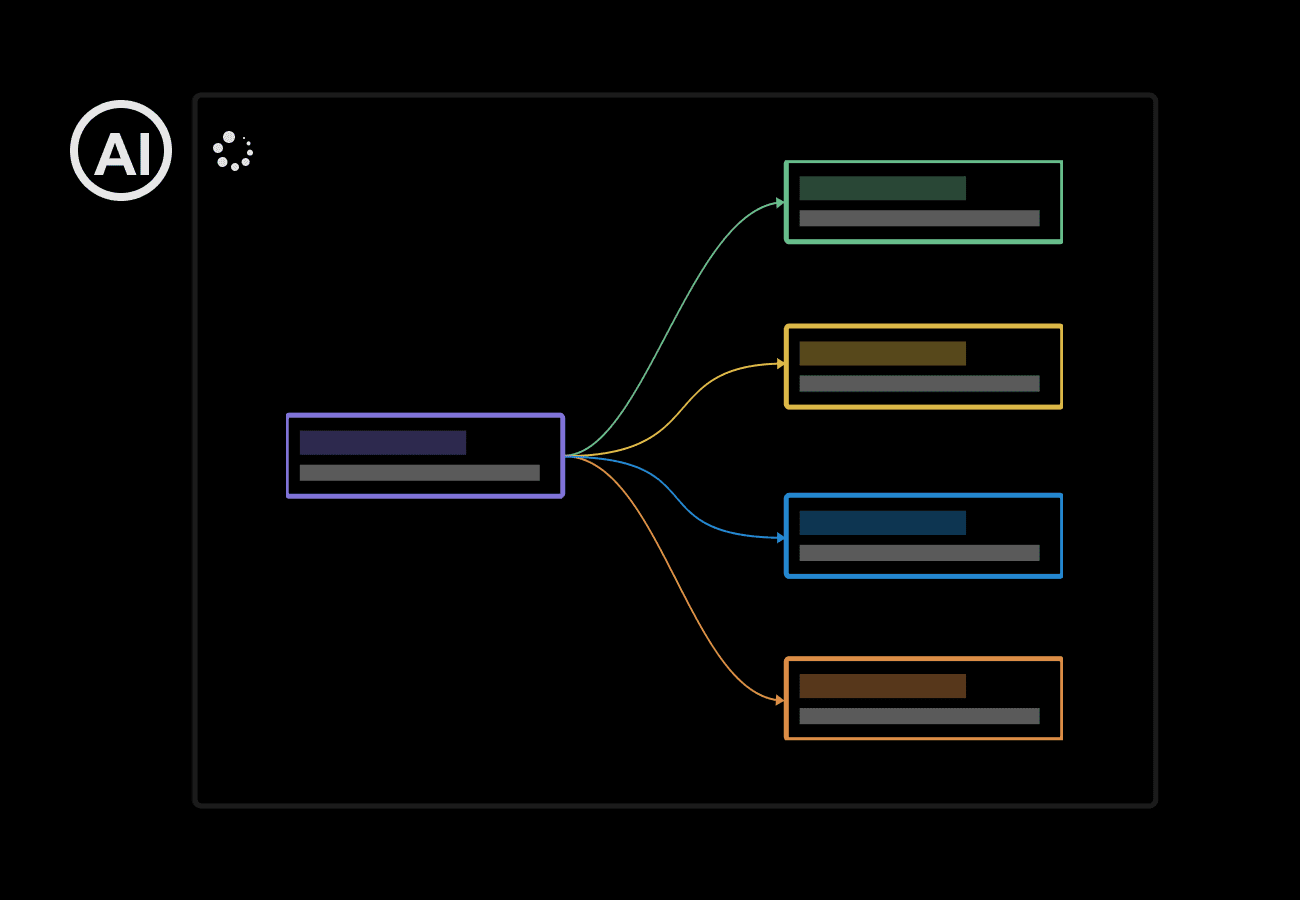









How to Create Kanban Board with AI
Effortlessly generate Kanban boards using AI, surpassing manual setup in Trello or Azure. MyMap's tool offers instant, customizable results.

1. Describe Your Project
Chat with AI about your project's needs and tasks. MyMap instantly creates a tailored Kanban board.

2. Modify AI-generated Board
Refine your Kanban board through natural language prompts. Adjust columns, cards, and priorities effortlessly.

3. Export and Share
Download your Kanban board as PNG or publish online with a unique URL for easy team access.
Why Choose MyMap's Free AI Kanban Tool?
AI-Native
Chat with AI to set up your Kanban board - no manual setup needed.
Multiple Format
Upload any file type, and our AI will use it to help plan your tasks.

Web Search
Our AI fetches the latest info from Google and Bing for your projects.
Internet Access
Paste any URL, and our AI extracts relevant info for your Kanban board.
Collaboration
Work with your team on the same board in real-time.
Share & Export
Save your board as images or PDFs, or share a link with others.
Use Cases for AI Kanban Board Maker
Software Developers: Streamlining Sprint Planning
Software development teams use the AI Kanban Board Maker to effortlessly plan sprints. By describing project requirements to the AI, developers instantly generate a structured kanban board with appropriate columns and tasks. This automated setup saves hours of manual organization and ensures consistent sprint planning across teams.
Marketing Teams: Managing Campaign Workflows
Marketing professionals utilize the AI Kanban Board Maker to organize multi-channel campaigns. They input campaign objectives and target audiences, and the AI creates a tailored board with stages for content creation, design, approvals, and distribution. This streamlined workflow increases campaign efficiency and improves team collaboration.
Educators: Organizing Curriculum Development
Teachers and curriculum designers use the AI Kanban Board Maker to plan and track course development. By describing course objectives and content areas, they receive an AI-generated board with columns for different subject modules and tasks for resource creation. This visual organization helps educators maintain a clear overview of curriculum progress and deadlines.
FAQs about AI Kanban Board Maker
Why Choose MyMap.AI over other Kanban board tools?
MyMap.AI offers unique AI-powered features. Unlike traditional Kanban tools, MyMap.AI allows you to create and manage your Kanban board through a chat interface, eliminating manual setup. It's more intuitive and efficient, especially for those new to Kanban methodologies.
How can I export my Kanban board?
Yes, you can export your Kanban board. MyMap.AI allows you to export your board as a PNG or other image formats, making it easy to share or integrate into presentations and reports.
How can I share my Kanban board?
Sharing is simple. You can share your Kanban board through a public URL, allowing team members or stakeholders to view and collaborate on your project without needing an account.
Is MyMap.AI free to use?
Yes, MyMap.AI offers a free tier. You get 5 free daily AI credits to create and manage your Kanban boards. For more extensive use and premium features, paid plans are available.
Can I customize my Kanban board layout?
Yes, absolutely. MyMap.AI's AI assistant can help you set up a custom layout based on your project needs. Simply describe your desired layout through the chat interface, and the AI will create it for you.
Does MyMap.AI support team collaboration?
Yes, it does. MyMap.AI is designed for team collaboration. You can share boards, assign tasks to team members, and track progress collectively, all through an intuitive AI-powered interface.
Can I integrate MyMap.AI with other project management tools?
Currently, direct integrations are limited. However, you can easily export your Kanban board as an image to use in other tools. We're continuously working on expanding our integration capabilities.
How does the AI assistant help in managing my Kanban board?
The AI assistant helps by automating board setup, suggesting task prioritization, and providing insights on workflow efficiency. It can also help reorganize your board based on project changes or team feedback, all through natural language commands.
Is my data secure with MyMap.AI?
Yes, data security is a top priority. MyMap.AI employs industry-standard encryption and security practices to protect your project data and personal information.
Can I use MyMap.AI's Kanban tool for personal projects?
Absolutely! While powerful enough for team projects, MyMap.AI's Kanban tool is equally suitable for personal task management and project organization.
